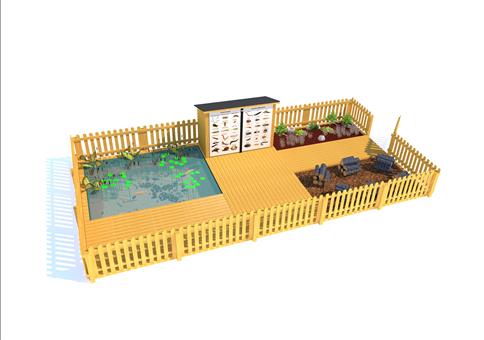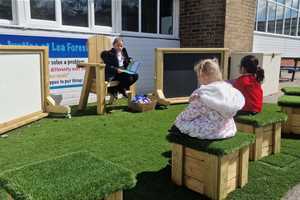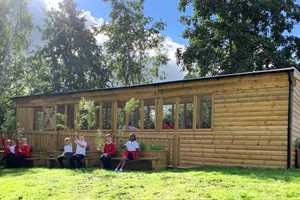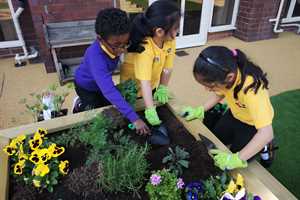
Outdoor Learning and Play
Forest Schools – What are they and what are their benefits?
What is a Forest School?
A Forest School is an educational approach that focuses on outdoor learning in natural environments, typically woodland or forest settings. Originating in Scandinavia, Forest Schools aim to provide children with regular opportunities to explore and engage with nature in a hands-on and experiential way. These programs often emphasize holistic development, encouraging children to learn through play, exploration, and direct experience with the natural world.
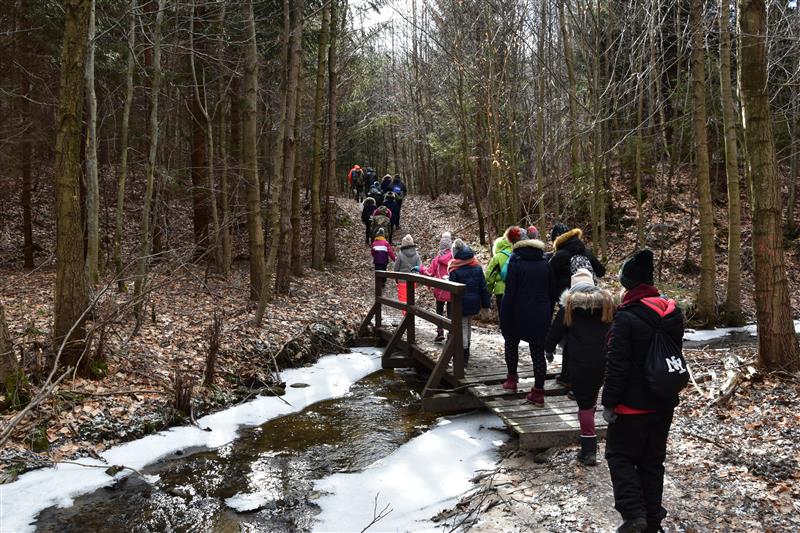
Forest Schools usually include activities such as:
- Outdoor Play: Forest Schools prioritize outdoor play and physical activity, giving children the opportunity to climb, build, and engage in imaginative and creative play in natural settings.
- Nature Explorations: Children are allowed to explore the natural environment around them. Learning about animals, flora and fauna, and ecosystems through direct interaction and observation.
- Risk-Taking: Forest Schools encourage children to take assessed risks and develop problem-solving, resilience, and autonomy skills. To develop confidence and self-esteem children are encouraged to do activities such as tree climbing and den building.
- Seasonal Learning: Seasonal changes are embraced by Forest Schools, encouraging observation and interaction of the children with nature throughout the year. Thus, forming an understanding and appreciation for the natural world and its rhythms.
- Environmental Education: Environmental education is often incorporated into Forest School’s curriculum, teaching children about the importance of protecting the natural world, conservation, and sustainability.

Forest Schools provide a unique and enriching educational environment for children, which encourages deep connections to nature and enhances children’s physical, cognitive, and social-emotional skills.
The Rise In Popularity Of Forest Schools In The UK Over The Past Few Years…
In recent years, the popularity of Forest Schools in the UK has grown, because being out in nature benefits children’s development and well-being. Below are 6 key reasons why Forest Schools have grown in popularity.
- Realising Children Are Spending Less Time Outdoors: Our society has become increasingly urbanised and technologically driven. With this comes negatives, one of which is that children are spending less time outdoors and more time in front of screens! Forest Schools offer a wonderful antidote to this “nature deficit”, allowing children to regularly connect with the natural environment around them in a meaningful way.
- Parents and Educators Value A Well-Rounded Education: Traditional education is all about academic achievement and not about a well-rounded child. Forest Schools, look at children’s social, emotional, physical, and cognitive development which resonates with parents and educators who value a well-rounded education that nurtures the whole child.
- Promoting Outdoor Learning: Forest Schools provide rich outdoor environments where children can learn and thrive. Many studies prove that outdoor learning has numerous beneficial outcomes for children such as improving physical health, increasing creativity, reducing stress levels, and enhancing cognitive learning.
- Hands-On Learning: Children learn from “hands-on” learning, where direct experiences, exploration, and discovery extend children’s knowledge and understanding. Forest Schools encourage “hands-on” learning as it is more engaging and memorable for children, as well as fostering important skills such as problem-solving, creativity, and critical thinking.
- Supportive Research And Backing: Over the past few years research has shown the positive impact of Forest Schools on children’s development and well-being. This research has been backed by educators, environmentalists, and child development experts who all support Forest Schools and their promotion as well as support for their expansion.
- Environmental Conservation: Forest Schools resonate with parents and educators who have concerns about the changing environmental climate. By encouraging children to learn and play in natural environments, they will become more in tune with nature and want to encourage environmental sustainability and conservation.
The rise in Forest Schools in the UK reflects a growing desire for parents and educators to educate their children about the natural world around them. Developing the child’s holistic and experiential learning. More and more parents and educators are seeing the increased benefits of Forest Schools and the positive impact they are having on children nurturing their resilience, creativity, communication, problem-solving, and cognitive skills. As more people recognise the importance of Forest Schools, the demand for these innovative educational settings will grow!
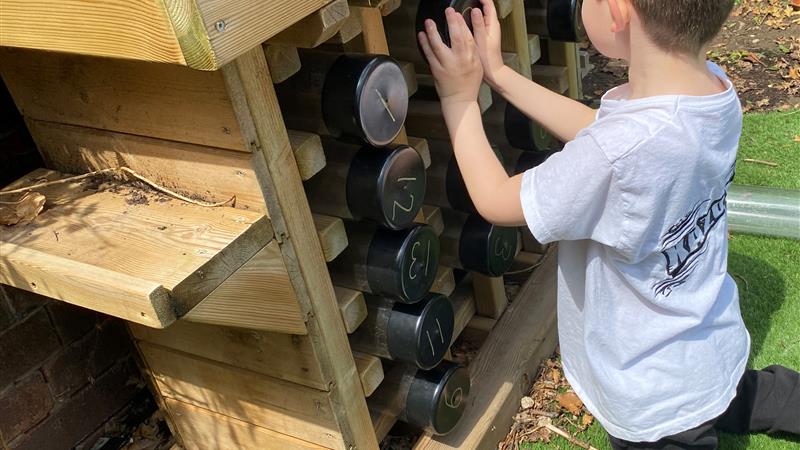
What are the benefits of Forest Schools?
Forest Schools offer a range of benefits for children’s social, emotional, physical, and cognitive development. Here are some key benefits of Forest Schools:
- Connection With Nature: Forest Schools provide children with daily contact with the natural world, promoting a deep connection between the child and nature. Research shows that spending time outdoors can improve mood, reduce stress, and promote overall well-being.
- Physical Development: Encouraging children to be outdoors climbing trees, exploring the natural landscape, and building dens develop physical strength, coordination, and gross motor skills. Giving children the opportunity to run, jump, climb, balance, and manipulate objects in unstructured, natural settings helps their overall physical development.
- Emotional Well-Being: Research shows that being in nature is linked to reducing anxiety, depression, and Attention Deficit Hyperactivity Disorder (ADHD). Forest Schools therefore provide a natural environment where children can explore freely and express their emotions in a calming environment which encourages emotional resilience.
- Social Skills: Forest Schools promote collaborative activities for children, such as teamwork during outdoor games, and cooperative building projects E.g. den building. These collaborative activities encourage social, communication, problem-solving, and negotiation skills. By working together children can learn to share resources, delegate roles, and respect each other’s ideas and boundaries.
- Risk Management: A key skill that children need to develop in childhood and to be used well into their adulthood is Risk Management. Forest Schools promote activities where children must calculate risk. These activities could be tree climbing to using tools under supervision. By developing key risk-assessment skills in early childhood, children can develop confidence and resilience. Research has shown that the more children are exposed to manageable risks the better they are at decision-making and self-regulation.
- Creativity and Imagination: Children's creativity and imagination flourish in natural environments. Forest Schools provide the perfect environment for imaginative play, storytelling, and creativity using natural materials. Therefore, enhancing children’s cognitive development, imaginative thinking, and a sense of wonder.
- Environmental Awareness and Appreciation: Children who spend time in nature develop a deeper understanding and appreciation of the natural world. Forest Schools include in their curriculum ecological education, teaching the children about local flora and fauna, ecosystems, and sustainable practices. By learning about how to look after nature you are sowing the seeds in children’s minds of how to look after the natural environment around them.
- Academic Learning: Outdoor learning can work perfectly alongside traditional classroom learning and aid academic performance. Research has shown that nature-based learning enhances cognitive skills such as attention, concentration, creativity, and problem-solving. It also supports a holistic learning approach that can be integrated across the curriculum.
- Health Benefits: Forest Schools promote overall health and well-being by encouraging children to be outside doing physical activities instead of being sedentary. Being outdoors in a natural setting allows children to breathe in the fresh air, have sunlight exposure, and be in contact with diverse microorganisms, which can strengthen their immune system and reduce the risk of heart problems.
- Long-Term Benefits: Studies have shown that Forest School experiences can have a positive impact on children. These experiences develop a love for the great outdoors which extends into adulthood and a lifelong appreciation for nature, a sense of environmental consciousness, and improved mental health outcomes.
Forest Schools have so many benefits as a holistic educational approach that prioritises children’s well-being, development, and connection with the natural world.
Forest School Activities...
Forest School activities for Early Years Foundation Stage (EYFS) children in the UK are designed to encourage exploration, creativity, and connection with nature. Here are a couple of ideas for Forest School activities suitable for EYFS children:
- MINI-BEAST AND PLANT HUNT:
Aim: To encourage children to explore their outdoor environment, observe mini-beasts and plants, and develop their curiosity and understanding of the natural world.
Materials Needed:
- Clipboard
- Paper
- Pencils or crayons
- Magnifying glasses (optional)
- Bug Pots (optional)
- Field guides or picture cards or common mini-beasts and plants
Instructions:
- Introduction: Start with discussing with the children what mini-beasts are (insects, spiders, worms, etc) and what plants are. Show the children pictures of common mini-beasts and plants. Talk about the importance of respecting and caring for living things in nature.
- Preparation: Give each child a clipboard, paper, and pencil. If available give children a magnifying glass and bug pots for closer observation.
- Exploration: Take the children outdoors either to a woodland or forest or if you are not able to into the school playground. Encourage the children to look closely at the ground, under leaves, and around flowers to spot mini-beasts and plants. Encourage gentle handling and observation, reminding the children to treat all living things with care.
- Observation and Recording: As the children find mini-beasts and plants, ask them to draw them on their paper and make little notes about them. For example, what colour are they, do they have wings, and how many legs do they have? If they have a bug pot, they can capture the mini-beasts whilst they observe them and free them once they have finished.
- Discussion: Gather the children in a circle and ask them to share their findings. Ask questions such as:
- What mini-beasts did you find?
- What plants did you find?
- What did you notice about them?
- How do you think the mini-beasts and plants help each other or the environment?
- Wrap-Up: Conclude the activity by discussing the importance of taking care of nature and all its inhabitants. Encourage children to continue exploring and observing mini-beasts and plants whenever they have the opportunity.
- Extension: Create a mini-beast and plant identification booklet with the children’s drawings.
The above activities can be done in either a woodland or forest environment. However, many children don’t have access to natural open spaces don’t fear as Pentagon Play can bring a little bit of nature to your playground. Our new Wildlife Area enables children to discover the joys of the natural work in a playground environment. The Wildlife Area provides a safe fenced environment with decking, a pond, planting areas, an attractive mini-beast habitat, a mini beast identification sheet, and seating.
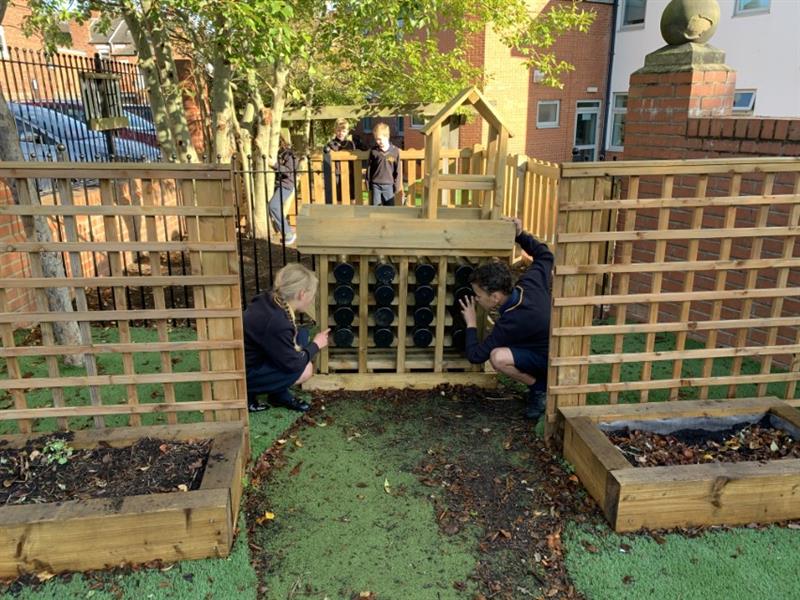
The planting area allows children to grow their vegetables or wildflowers whilst the mini-beast area is the ideal habitat for attracting indigenous bugs and mini-beasts for closer inspection. The pond provides an area of tranquillity as well as a wonderful habitat for aquatic insects, small fish, and water-based plants.
Children can find all the different mini-beasts in the Wildlife Area using the permanent mini-beast identification sheet within this area. A handout reference sheet of plants can be provided to the children to identify each plant and where they grow.
Watch as the children submerge themselves in the wonder of nature and see them collaborate, communicate, and problem-solve together!
- DEN BUILDING:
Creating a den-building activity for EYFS children in a Forest School environment can be an exciting and enriching experience. Here’s a structured plan for den building.
Aim: To foster creativity, collaboration, problem-solving, and physical development among EYFS children through den building in a natural outdoor setting.
Product Spotlight
Materials Needed:
- Natural materials such as branches, logs, sticks, leaves, and vines.
- Rope or twine (for securing structures)
- Tarps or large pieces of fabric (for covering the den)
- Safety equipment like gloves (if needed)
Preparation:
- Scout the forest/woodland area beforehand to find a suitable spot for building dens.
- Make sure the area is safe and free from hazards like sharp objects, steep drops, or poisonous plants.
- Gather a variety of natural resources in different sizes and shapes for children to use in building their dens.
- Introduce den building to the children, making sure they understand the safety rules and the importance of teamwork.
Instructions:
- Introduction:
- Gather the children in a circle and explain the activity.
- Make sure they understand that this is a team-building exercise, working together, sharing ideas, and being safe.
- Show examples of different types of dens or shelters that can be built using natural materials.
- Exploration and Gatherings:
- Allow the children to explore the forest/woodland area and collect materials they find interesting.
- Encourage them to discuss their findings and share ideas.
- Building:
- Divide the children into small groups or pairs.
- Let each group select a sport to build their dens.
- Encourage the children to work together to plan and construct their dens using the gathered materials.
- Allow the children to take the lead in the building and design of their dens. Only offer assistance and guidance when needed.
- Encourage creativity and problem-solving as they encounter challenges.
- Decoration and Finishing Touches:
- Once the basic structure of the den is complete. Encourage the children to ass decorative elements such as flowers, leaves, or small natural objects.
- They can also discuss and decide if they want to add a covering to their dens for extra protection from the elements. What could they use?
- Reflection:
- Gather the children back together to reflect on their experience.
- Ask questions such as:
- What was your favourite part of the den building?
- What challenges did you encounter, and how did you overcome them?
- How did you work together as a team?
- How do you feel about the den you built?
- Allow the children to share their thoughts and feelings about the activity.
- Cleanup:
- Remind the children to leave the forest/woodland area as they found it, picking up any stray materials and disposing of them properly.
- Extension:
- Ask the children to explore den structures again but in a different season and discuss how they might need to adapt it for the different weather conditions.
Again, children may not have access to forests or woodland and therefore a school playground can facilitate a den-building activity. This can be a fun and engaging way to help children develop their teamwork, problem-solving, and creativity skills. All you need is a big enough space for multiple groups to work comfortably without disturbing each other and follow the steps above. If there are not enough natural resources such as branches, logs, sticks, and leaves make sure to collect plenty of them before your den-building activity.
Pentagon Play’s Den Making Posts could be another fantastic resource to use during den-building lessons in your school playground. Each Den Making Post has totem holes and grooves that run from the top to bottom, enabling any den to be at multiple heights. All you need is some string, a tarp, and a big imagination, and away you go!
The above 2 Forest School activities provide opportunities for EYFS children to engage with nature, develop key skills, and foster a sense of wonder and curiosity about the world around them.
For more information on Pentagon Play's products, Contact Us Today or Email [email protected] where one of our expert advisers will be happy to help!
REFERENCES:
www.childrehoodbynature.com – forest schools how climbing trees and making dens can help children develop resilience.
www.circleofliferediscovery.com – Forest School Handbook
www.early-education.org.uk – risk a forest school perspective
forestschoolcompintro.pdf (sthelenspreschool.co.uk)
www.theconversation.com – how climbing trees and making dens can help children develop resilience.



.jpg)


